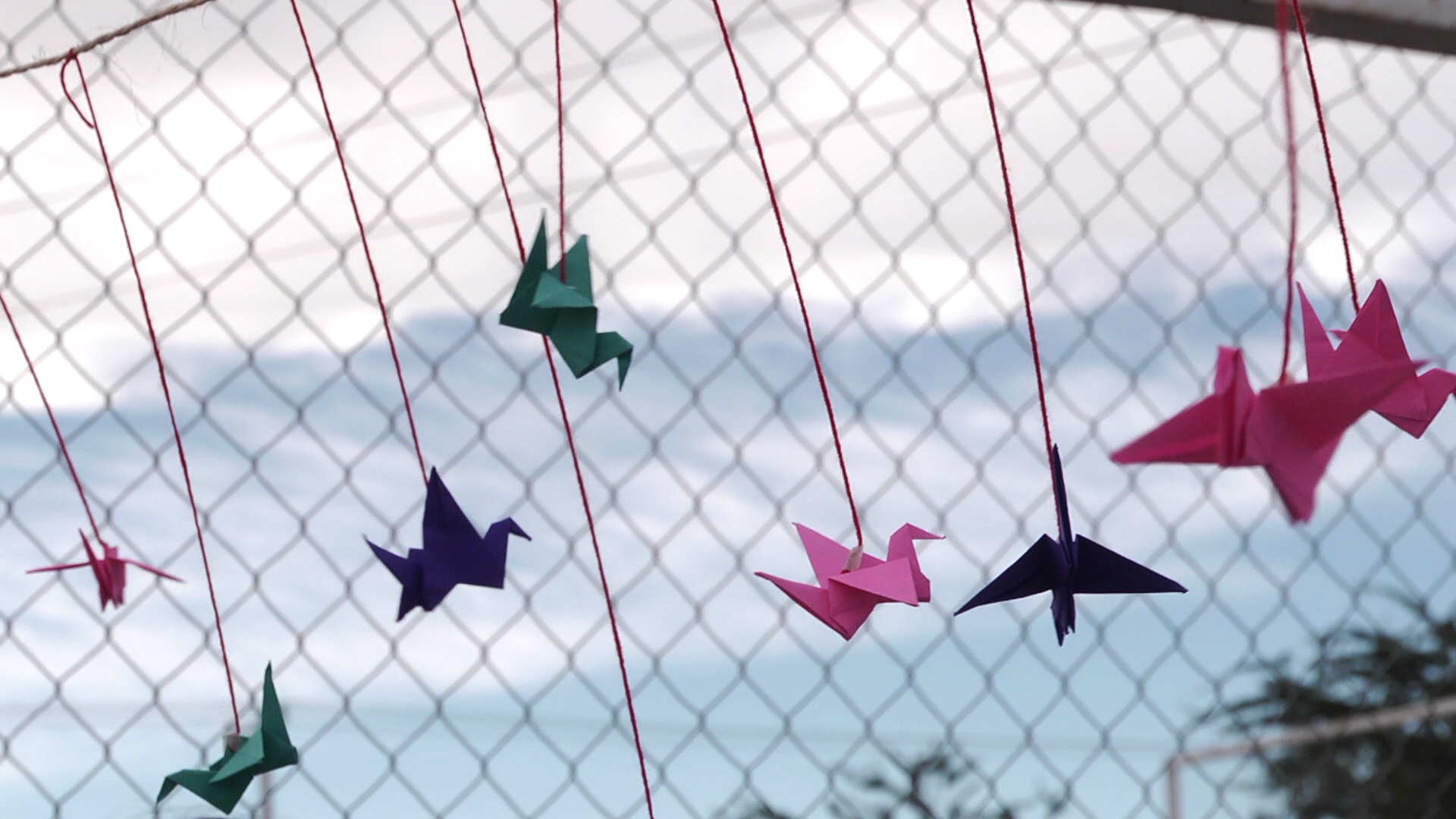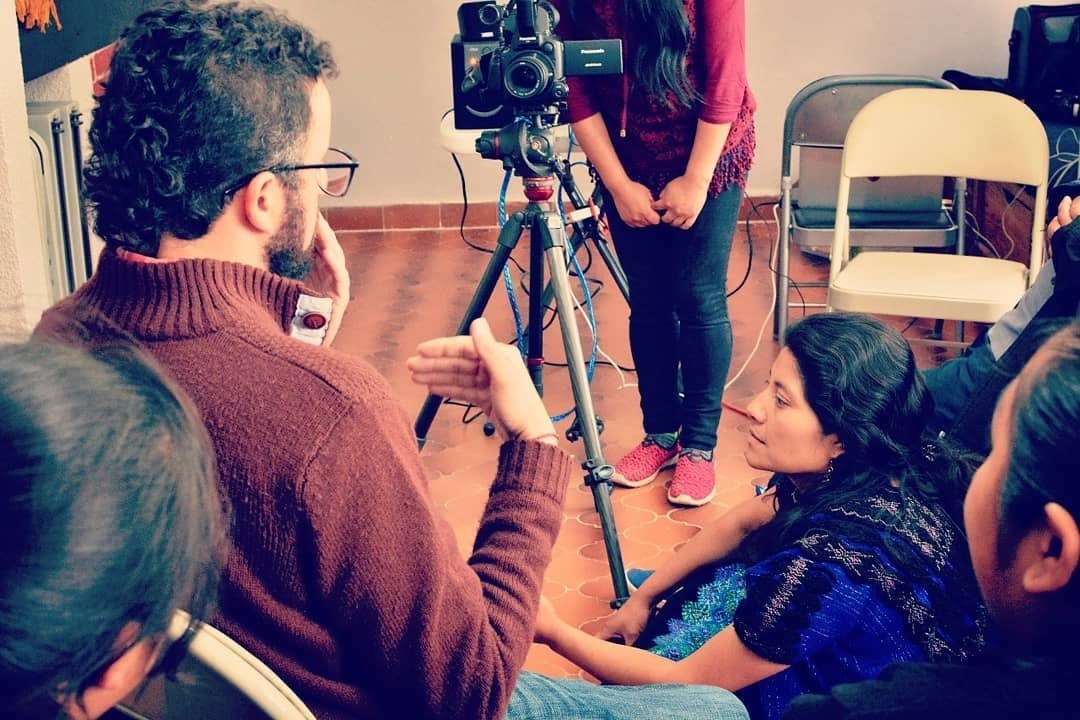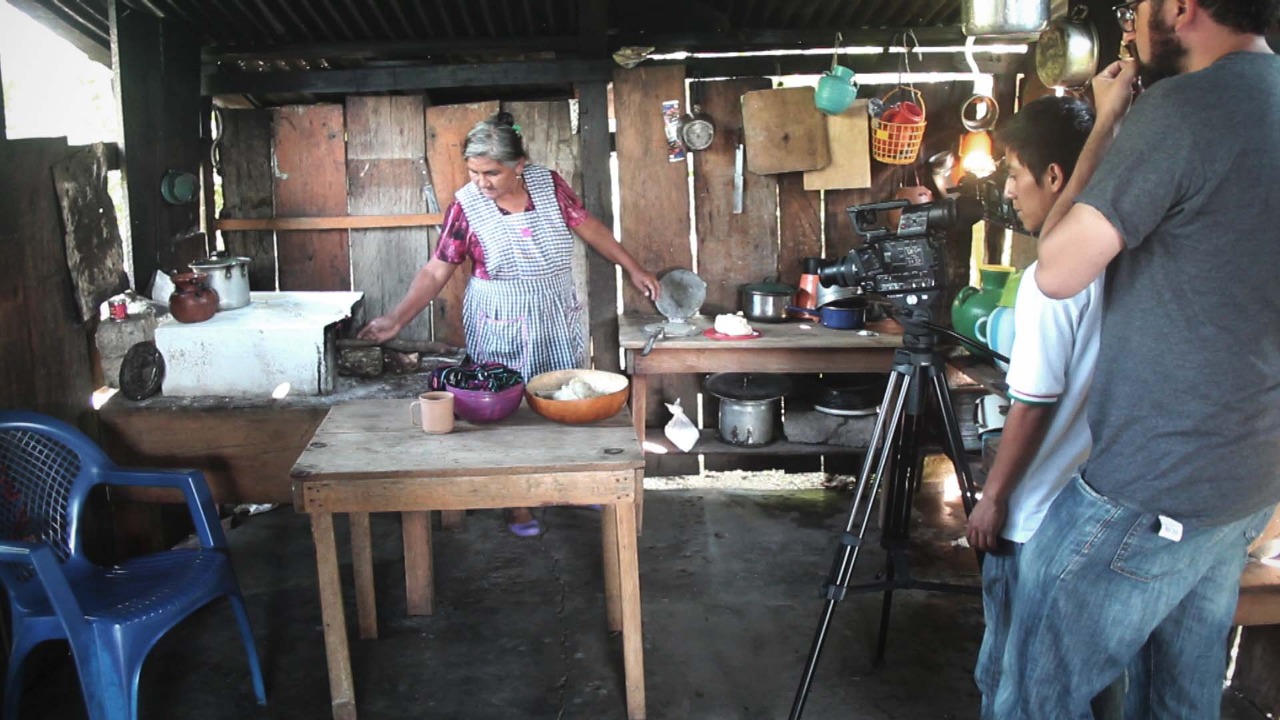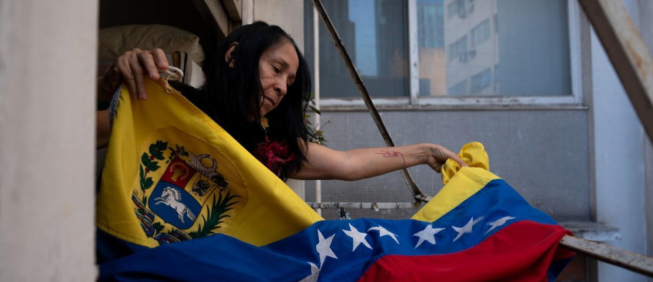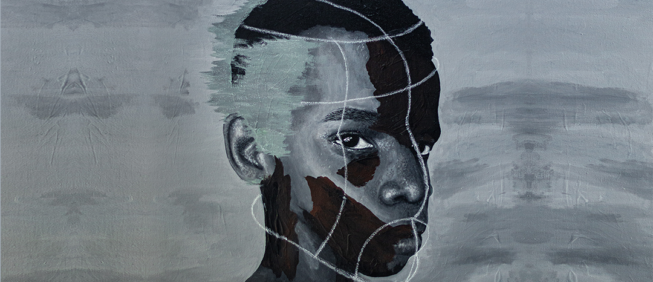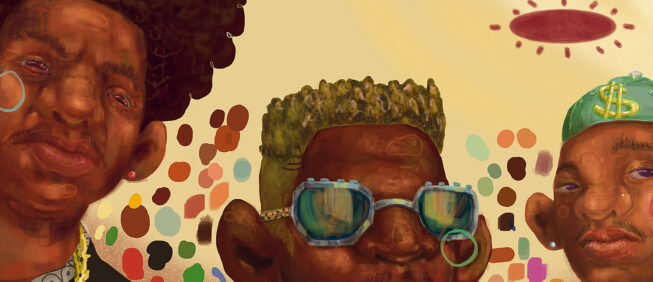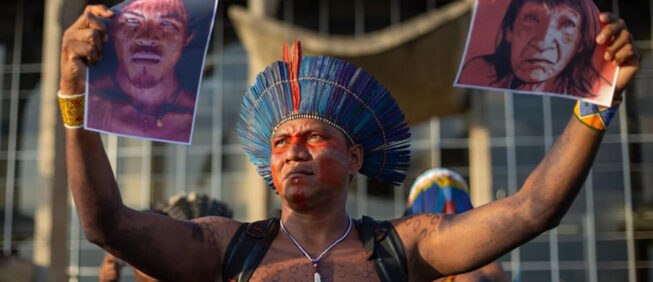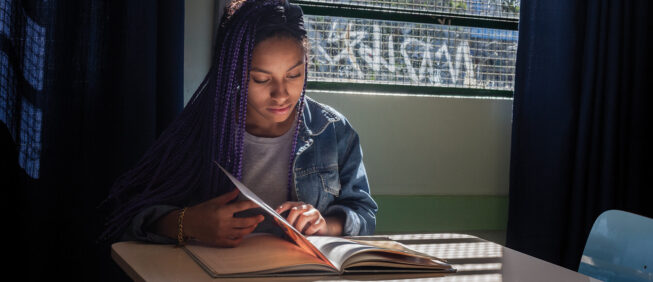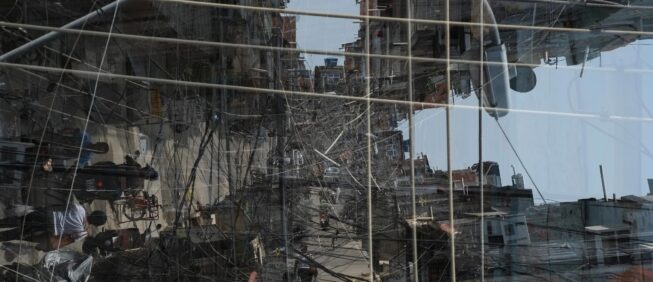The Migrant Museum - MuMi
Buen Vivir and Buen Migrar: Remembrance and Creative Resistance
Deyanira Clériga Morales
Pável Valenzuela Arámburo
Aldo Jorge Ledón Pereyra
| Mexico |
21 de July de 2019
translated by Mark Prunella-Mille
In the fight is where we find one another. In Portuguese, "Na luta é que a gente se encontra," because despite our physical distances, [diverse] languages, and cultural differences, our historical roots are always there, letting us find ourselves among the people that work to build in the middle of a hostile world.
This is a narrative built by members of the Voces Mesoameriacanas organization and of the Autonomous University of Chiapas. As a part of the Global Grace project, we work as a community with the Migrant Museum-MuMi, an itinerant museum of Chiapas, South Mexico, for the indigenous people’s fight for migration as resistance, for the right to flee, and for political action: borders are disputed, borders are lived! This is how our living memory is constructed: from our voice, the Migrant Museum-MuMi and the participatory cinema generate creative processes with youth in the MuMi as a human emancipatory experience in Chiapas. Finally, the Migrant Museum traveled to Bela Maré, in Rio de Janeiro, Brazil. What did the meeting of Bela Maré and the MuMi mean to us?
Chiapas: From the struggle of indigenous peoples to migration
Chiapas is situated in the southeast region of Mexico and shares a total of 654 km of natural borders (rivers, mountains, forests) with Guatemala. It has a population of 5.5 million people, consisting of a large population of people with Maya origins: jacalteco, mame, tojolabal, cachiquel, motozintleco, lacandon, chuj, tseltal, tsotsil, and choly zoque, the last four being the most predominant. In total, there are 1,141,000 people that speak indigenous languages in this region.
Chiapas is the poorest state in the country, with 76.2% of its population living in situations of poverty, or 3,962,000 inhabitants. Between 2012 and 2014, Chiapas saw its population living in poverty grow an additional 1.5%, and the state accounts for 7.5% of the entire country’s population [living] in this situation. Poverty is persistent and has increased significantly in the last ten years.
These precarious situations and the lack of [indigenous people’s ability to] exercise their rights are compounded by the state of Chiapas’ great diversity of natural resources, which has historically made it a disputed territory. Water, wood, fossil fuels, precious stones, farmlands, among other [natural resources], have generated the greed of national and transnational companies. These, by means of strategies for the supposed generation of resources and development for the region, have permitted the plundering of nature and violence toward the people living in these territories. Since Guatemala’s internal armed conflict, the Zapatista armed uprising, the 9/11 terrorist attacks, global agreements on hemispheric security, and the serious forced displacement crisis in the region today, all these have been converted into justifications for strengthening our country’s national security and armament programs with an emphasis on border regions. The effects on Chiapas have been punishing.
Nevertheless, the original people, impoverished, abused, raped, and killed—always the destitute—are those who show us courage and the true meanings of justice, struggle, rebellion, autonomy, respect, dignity, and rights… they are women and men of all colors who break through the darkness with lights of hope and shouts of “never again, a world without us!”
This is the way it is, and that is the way it was in 1994, when the globalized world celebrated the North American Free Trade Agreement (United States, Canada, and Mexico) as a great advancement for lifting Mexico out of its consumerist poverty. The people knew that this was the beginning of a death sentence in which the common people, men and women, who would suffer the aftermath. Again, Chiapas shouted out to the world, enough!
That same year, 1994, the indigenous people, tired of the history of violence and exploitation, decided to rise up in arms against a capitalist and neoliberal government, fighting for autonomy, respect, and inclusion; they were armed women and men who gave us an example, on a worldwide level, of the importance of the struggle and unending fight for a just world, and one in which all views and thoughts are respected and included.
And so the people have continued building their movements, our movements, and those of the whole region of Latin America; they are the people who resist, adapt, transform, and invent new ways to walk along our planet; nowadays, migrations are the living examples of resistance and the fight to not be forgotten, a fight that unites all people of our region.
Today, the most defiant act against the politics of exclusion is that of building a political and demanding collective memory. This becomes a fundamental tool for future justice.

Resistance, the right to flee, and political action: Dispute borders, live on borders!
At the end of 2018 and the beginning of 2019, we witnessed the evolution of forced displacements, their transitions into public and visible social movements in which people walked across borders in masses, exercising their right to flee, the right to not die in the hands of an unequal and violent system. Thousands of people coming from Central America left countries besieged by violence, corruption, poverty, and the deprivation of rights; they fled in thousands and began to walk in caravans akin to the Exodus.
These people, the most impoverished and abused, saw a strategy on the horizon. They are people who, in the historical context of irregular migration, would never be able to cover the costs of trafficking networks or bribery to governments, as it is clear that in order to migrate one needs economic resources. But it is here that the forced decision to leave becomes a life or death gamble for families and entire communities.
It is important to highlight the historic role of oppressor that the United States government has had in Central American countries in the last 70 years. We need only to look as far as the beginnings of the internal armed conflicts which allowed for the justification of the “American intervention” in order to create intelligence and counterinsurgency strategies, which, years later, generated a base for the plundering and territorial control of the resources in this region. Today, the consequences of this intervention manifest themselves in economic development and security policies imposed by the United States on all of Latin America. The International Monetary Fund, the World Bank, free trade agreements, and hemispheric security deals can be understood as factors that have triggered forced displacements. Now [migration] has emerged from the shadows, becoming a public social movement in the form of a Migrant Exodus.
There are thousands of people, girls, boys, teenagers, families, pregnant women, elderly, disabled, constituents of the LGBTTTIQ community, who have all been direct or indirect victims suffering physical, emotional, systematic, historical, and symbolic violence to their bodies. This violence originates from the prevalence of a model of development from the northern countries, where the ending of life and nature are justified by the need to sustain the insatiable consumerism of “modern and developed” societies. The Migrant Exodus is the honorable expression of the thousands of people that face adverse situations of poverty, violence, and exploitation. It instead proposes creating life and safety for its families, communities, and towns.
It is in this setting, which today presents us with the rawest expression of systematic violence in forced displacement, that we have the possibility to change our history by uniting in our resistance as Latin American people, by building real bonds of interculturality and integration, and by disputing borders not from the conception of division and subordination, but from the possibility to rebuild our historical and ancestral territories. To live on borders in harmony and well-being with nature, to ground our riches in the infinite spectrum of our people’s thoughts, and [to use] organized political action as an engine for the choice of buen vivir and dignified life in our Latin American communities.
Let those paths on which we accompany each other and take care of each other be the norm! We should recognize their value and the greatness and contribution of every life that walks on our mother earth for the well-being of our present.
Mumi, Jornadas con jornaleras y jornaleros en Sonora. from Atmósfera Audiovisual on Vimeo.
Construction of a living memory: From our voice, the Migrant Museum-MuMi
The Migrant Museum (MuMi) has been a collective construction of migrant people with whom we work at Voces Mesoamericanas. It isn’t a finished museum. Just like migrations and their dynamics, generating and telling stories, the museum is nurtured by ideas, interactions, and the spaces that it occupies where we set it up.
On one hand, we think of it as a way for the indigenous people from Los Altos de Chiapas to value themselves and recognize their own stories for the creation of a collective memory as a political act and as an act of resistance, giving voice to the stories that are never told. We wanted to share what moves and touches the people from these areas, these people that live in migratory contexts: their pain, their struggle, their happiness, and ways of organizing themselves and resisting.
We wanted other women and men to see the MuMi and to acknowledge these lives, full of color, working with the land, in relationships with the sacred, in their complexity, and in their protest and demand for rights. We also wished to share the injustices of the migratory context of our time: forced migrations in the name of survival, where original communities' ways of life reproduction are being swept away; detentions and humiliation during transit; disappearances, deaths, racism, and the exploitation of labor at their destinations; as well as the plight of those that stayed, the ways migrants organize and reunite with the members of their families that never left, but always experienced the migration from the other side. Thus the four sections of MuMi: Aqui estamos- The origin, En el camino estamos- Transit, Estamos allá- The destinations, and Ya regresamos- The return.
The MuMi is this: roots, faces, and routes that tell a bit of history, accompanied by the colors and embroidery that characterize the people of this region, and interactive [exhibits] that we have built so that people can play and reflect on their own migrant stories. There is also the MuMi forum (a living setting-space) that nourishes the creative and artistic expression of young girls and boys who want to work with educational processes of critical reflection, organization, and the demand for rights.

The participatory cinema, a creative process for youth in the MuMi
Cinema allows human beings to get close to moving images of realities and diverse fictions, to know the ways of others, to travel, to visit other places, and observe other cultures. Just like an airplane “... these two inventions shorten distances, [they] lead to imagination and dreaming” (Morin, 1979). The two inventions succeed at lifting us off the earth. Thus, film allows us to migrate to other spaces and times without the need to move. From its origins, cinema has been mainly aimed at large audiences, designed to serve commercial ends, generating a prosperous industry with an elite nucleus of characters that revel in fame and opulence or, from a colonialist vision, search for the exoticism of others, for what would be seen as “primitive” in Europe.
At the same time, in certain spaces, there have been efforts to incorporate a focus on social content into film, using new artistic tools from the social sciences to establish multidisciplinary forms. Such efforts allow us to document and critically interpret reality, creating other methods, which are fairer and participatory, which [give] access to other perspectives than are usually invisible.
Hence, at the Migrant Museum (MuMi), a space for mobility and exchange of artistic expressions for young indigenous migrants from Los Altos de Chiapas, we are working on a participatory cinema that develops and promotes the creativity nurtured in the riches of the cultural surroundings of this Maya region, and in the communities that experience these diverse migration experiences.
We are looking to hold cultural events, share about ourselves, exchange practices, and [promote] mutual learning. The MuMi works with the purpose of fostering the self-recognition of the people, of their past and present, with the exercise and creation of their own stories to build community narratives. Coming from backgrounds in diverse disciplines, we share this dream as a commitment and political stance, that in this art, each and every one of these men and women may be protagonists, directors, and political actors in their lives and communities.
In our way of producing film, we aren’t looking to reproduce the prevailing logic: we see the cinema as a community tool for telling our stories and our anecdotes, as beings with specific characteristics, women, men, migrants, who live excluded from the standards of neoliberal logic, boys, girls, and youth that are transported to other realities by this art, just like the movies do.
With the participatory cinema, we create new ways and processes for generating images. Coming from the mother tongue of the people, cinematographic language is reinvented; narratives and hierarchies are eliminated. It is a communal learning: everyone learns from one another and all knowledge is valid and important. These processes are nurtured and form part of the final audiovisual product, developed by the community.
The MuMi in Bela Maré, Rio de Janeiro, Brazil!
For the first time, the MuMi travels to southern Latin America, and not just any place, but Bela Maré, Rio de Janeiro, Brazil! Setting up the MuMi in this favela meant spreading our message globally, telling the world about the indigenous migrants from southern Mexico, and, in doing this, connecting with different stories about migration, exclusion, the struggles, and resistances [shared] between people from both countries.
We had seen photos and had an idea of what the physical space where we would set up the MuMi would be like, but the truth is that in our experience, exhibiting the MuMi always ends up being uncertain until we get there, until we see where we’ll string up the ropes, how we’ll position the photos, tarps, and colored strings.
When we arrived at the space, the first thing that impressed us was a scale model of the Maré favelas. We had already spent at least a day walking around Maré's streets, and we had [encountered] many surprises: we danced, we exchanged smiles with various people in the favelas of Parque União and Nova Holanda. It was because of this that when we saw the scale model [of Mare], it took our breath away, and, of course, [gave us] the curiosity to want to get to know more about this territory.
Without much planning, we decided that the MuMi would be exhibited at the back of Bela Maré, opening its arms to that great scale model, embracing the land. At the same time, the neighborhoods of Maré made themselves available, willing to open up to the MuMi, to observe with fondness the stories of the far-away people from Mexico. After several weeks and after much sharing and reflecting together, both lands stopped feeling far away because we discovered the overlaps that exist in our roots, our faces, our routes, and of course, our pain and happiness.
As if that wasn’t enough, scores of paper birds (migratory cranes) were hung above the scale model, as if they were flying over Maré. Instead of helicopters shooting bullets, the birds symbolized the carrying of messages of solidarity, justice, and dignity.
This was the first time that MuMi had been exhibited in a gallery space. We had almost always been in the streets, the hallways of a school, the trees of some garden, on a football court’s fences, or on the bars over windows. It was a beautiful experience to find ourselves with hammers and nails, and of course, with the willingness of the whole Bela Maré team to collaborate in our adventure to exhibit the MuMi; there was never lack of a ladder, a chair, coffee, a fan, water, concrete nails, or tape.
Girls, boys, and youth exchanged with each other in the MuMi and had the possibility to build memories beyond “just observing.” For each meeting, an activity was planned, first recognizing what it means to migrate, where we live, where we were born, and where our parents and grandparents were born. During each encounter, we found ourselves on a giant imaginary map and learned together about the main migration routes from Northeast Brazil to Rio de Janeiro, and to Maré in particular.
We also thought about what things we knew from these places and what our parents and grandparents had told us, what different flavors there are, what it means to migrate, and why we do it. We told stories about where our roots, faces, and routes came from, we shared things that grabbed our attention, and doubts about [images in] the exhibited photos. What do the lit candles signify? Who are the indigenous people? Why are the police arresting them? Why are these people protesting? What are these kids playing? What are the women in this photo doing? What sort of work do migrating people do? How do they organize themselves? Why do migrants disappear? We asked these and other questions, and we went along sharing our collective reflections in order to give a new meaning to common migration stories once more, about what hurts us and what gives us hope for these roots, faces, and routes.
One day we made little paper birds and thought about migration as a right to fly, to move from one place to another freely; another day we opened up Pandora’s box and read the news about migration in Mexico, Brazil, and Latin America, and questioning why governments issue policies against migrant what is going on with racism, why some countries decide what others should do. We also dressed up paper dolls to tell stories about women migrants, evoking the names of grandmothers and mothers.
The experience of the participatory visits allowed us to share a final reflection, one that we maintain at Voces Mesoamericanas as a political-ethnic premise and hence a driving force for our mission: as people of the world, we have the Right to Not Migrate, which is to say, the right to respectfully stay in our communities of origin without having to migrate because the circumstances oblige us to go; but, consequently, we also have the Right to Migrate, because the world’s societies have been built on migrations. This right thus implies that the possibility to move from one place to another is completely guaranteed as freedom and justice.
What does Bela Maré and MuMi coming together mean to us?
First, we are thankful for the opportunity to have gotten together and for the trust and willingness Maré displayed in opening up the doors to their space and their land and letting us enter to be amazed, together as men and women, about everything that connects us in Our Latin America.
We realized that even today our common history has common impacts, that the structured colonial, capitalist, and patriarchal violence manifests in many ways for our people. We realized that the different forms of liberal democracy imposed on our countries have legitimized the continuity of power structures that perpetuate inequalities and thus injustice. We realized that the State’s violence, in physical and symbolic forms, has a daily impact on our bodies, minds, and hearts. We’ve been at war for many years, and in this war, death always falls upon people of color and indigenous people. We realized that we have been forced to migrate for hundreds of years, and that in our destinations, we have always built lives in fragile conditions. We realized that our values and colonial practices are expressed in a way where power “observes us,” and also in a way that we see ourselves as “the others.” We are united by stories of dictatorships, disappearances, right-wing governments, neoliberal laws and reforms, ineffective prison systems, racial extermination and its expression in the deaths that occur daily in our territories.
On the tearing of the social fabric in our areas, we realized all the things we have in common in which we are constantly suppressed, the many ways that the governments criminalize human rights defenders and community developers. We realized the ways in which they paralyze us and take away our possibility to live.
Above all, our encounter in Maré also gave us the possibility to be inspired together, to exchange ideas, smile together, hug each other, recognize ourselves, value our struggles, and dream about future possibilities.
We reaffirm the idea of art as a tool for political transformation. To paraphrase a poem by Celaya, “Poetry is a weapon loaded with the future,” art is a weapon loaded with the future, and we will live the experience together again and again.
We realized that we have common histories in our social movements, movements of peasants, urban workers, and students, and that we have both spent years saying "enough." We share all of these steps taken by thousands and thousands of people in the streets, steps taken to construct daily action in seeking and caring for what that which they love. We realized that despite long distances and a mixed Portuguese-Spanish exchange, we have always been able to find a way to transmit strength and passion. We recognized our capacity to move people, to displace body, mind, heart, and spirit with whatever happens in people's lives. To feel, in the territory, the individual and collective strength that lends dignity to human history.
We admire the resistance of black peoples in Brazil, with the potency of the identity of the favelas, and the women that embrace one another, transforming their pain into sorority.
We realized that the same black and indigenous peoples that have been dying for hundreds of years are the same ones that continue to teach us the myriad forms of dignified resistance and struggle. They continue to teach us ways of creating community and forming bonds, of loving our cheerful commonalities, and of walking in sincere embrace and solidarity.
We teach ourselves all of these ways of being together, and we grant ourselves the unalienable gift—despite everything—of enjoying life in its eternal brilliance while we are here.
We remembered that it is also through singing, dancing, and laughing that revolutionary acts are undertaken. This Rio favela territory reaffirmed this for us many times: we saw it in the houses that opened their doors to us, in the streets where we played football and shared beers, in the mural that we constructed together in Bela Maré, in the sweet words of Dona Victoria, in the memory of the Quilombo, and in the funk and samba that echoes throughout Maré. We saw it in the sacred possibility to continue celebrating and to keep resisting together, because, at our end and at our beginning, it is in the struggle that we find one another. And it is there, from Mexico to Brazil, from Maré to Chiapas, that we will continue to do so.
References:
Morin, Edgar, El Cine o El Hombre Imaginario, Paidos, Barcelona, 1972.

Deyanira Clériga Morales | Mexico |
Collaborates with civil organization Voces Mesoamericanas, following political process and popular education with the intercultural perspective of gender, with migrant indigenous people of Altos de Chiapas, for constructing the Right to Bien Viver and Bien Migrar
deyaniraclemor@gmail.com

Pável Valenzuela Arámburo | Mexico |
Holds a Master Degree in Visual Anthropology. Filmmaker and teacher in visual anthropology and documental cinema workshops. He is responsible for the Mexico team in the Project Global Grace Por el Buen vivir y el buen migrar: creating cultures of equality through the Migrant Museum (MuMi) in indigenous communities of Chiapas, México”.
atmosferaudiovisual@gmail.com

Aldo Jorge Ledón Pereyra | MEXICO |
Member of Voces Mesoamericanas, Acción con Pueblos Migrantes, A.C and coordinator member of Mesa Transfronteriza Migraciones y Género (MTMG). Since 2009, he has been an active advocate of migrant population of Mexico and Guatemala. He has experience in: searching for missing persons, psychosocial follow-up and médical/legal expertise for searching and identifying, follow-up and governamental mechanisms of legal defense against human and labor rights' violations.
ledon@vocesmesoamericanas.org